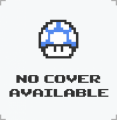
DIGIMON ANODE TAMER WONDERSWAN EMULATOR SERIES
Gundam is another prolific series on the system. It is, however, a source of Digimon and other licensed anime games thanks to being developed by toy company Bandai (which is now sometimes known through its video game merger Bandai Namco). This is the reason it remains a rather obscure system to many non-Japanese. It primarily released in Japan and saw a very limited release outside of the country. None of the screens have either a backlight or a front light, not being a common feature in handheld games until the Game Boy Advance SP several years later.Ĭartridges are similar in appearance to Game Boy Advance's cartridges except they're a bit wider and the pins are exposed. There are no Crystal exclusive titles to my knowledge. All three can play Wonderswan titles but only Color and Crystal can play Color games. Between the Color and the Crystal, however, I think the only difference is the screen quality or the refresh rate but both display in color. The differences between the Wonderswan and the Color and Crystal are obvious- the Wonderswan is monochrome (using grayscale instead of green scale). It has three iterations: Wonderswan, Wonderswan Color, and Wonderswan Crystal. The system was designed so games can be played in landscape or portrait mode (hence the two D-pad set of buttons are on the left side of the device while A and B are on the right side).

Finally, it has a Sound and a Power button. It has four X buttons and four Y buttons.

It has 13 buttons (there isn't anything like the D-pad, just two D-pad looking sets of individual buttons). Wonderswan was the competitor to the Game Boy and Game Boy Color.
DIGIMON ANODE TAMER WONDERSWAN EMULATOR PORTABLE
You know how the Nintendo DS and the Nintendo 3DS had competitors in the form of the PlayStation Portable and the PlayStation Vita?


 0 kommentar(er)
0 kommentar(er)
